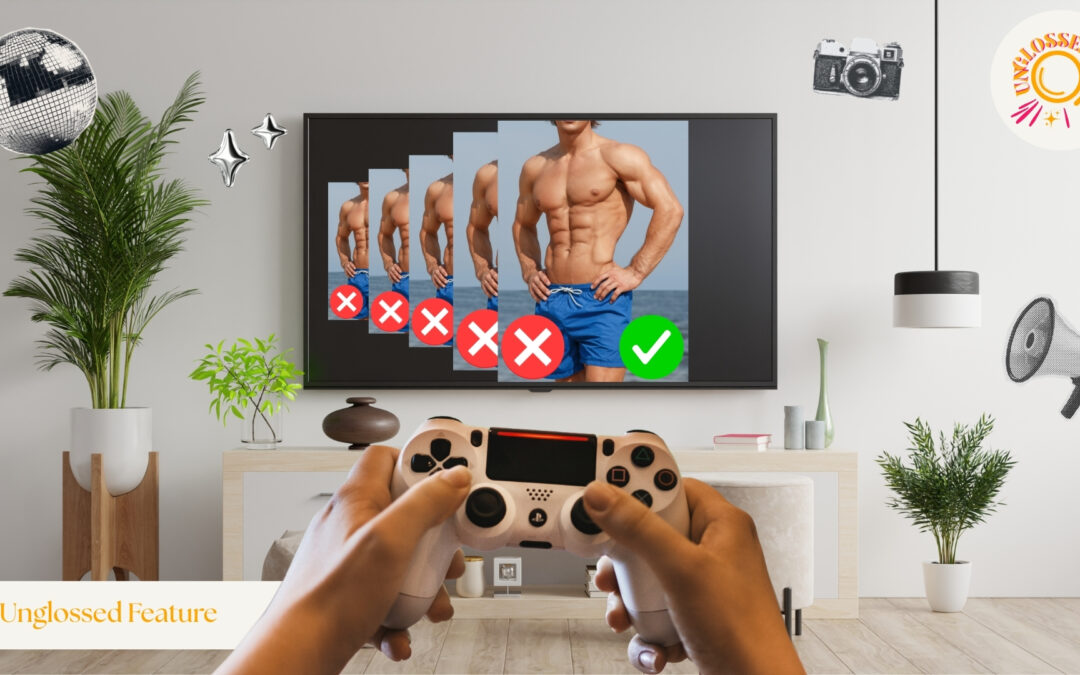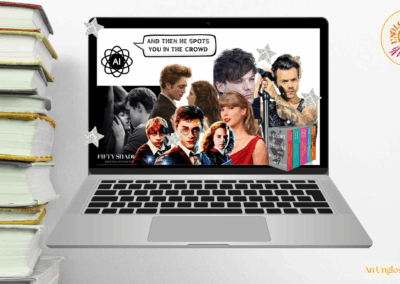From lash blindness to filter fatigue, our screens aren’t just changing how we look, they’re changing how we see ourselves.
“I can’t tell if my lashes are too long or not long enough.”
It’s a throwaway line from a TikTok GRWM, but it sums up a growing feeling online. Scroll for a few minutes and you’ll find more like it: blush blindness, lash blindness, Botox blindness. But what started as a joke of people poking fun at their overdone routines, now feels like something closer to the truth.
We’re not just going overboard. We’re forgetting where the line even is.
This is what some are calling beauty blindness: the growing inability to tell what looks good and natural. The more we scroll through filters, FaceTune, and filler-heavy trends, the more our sense of what looks “normal” gets thrown off. We’re not chasing perfection anymore, we’re just trying to keep up with a version of beauty that keeps getting louder.
According to a 2022 study published in the Journal of Vision, the average woman sees around 40 faces a day…most of them edited, filtered, or algorithmically enhanced. And when that many altered images are shaping your feed, it inevitably starts to affect more than just your taste. It messes with your sense of scale. What once looked fake now looks fine. What once felt “done” now looks bare.
We’ve always used mirrors to check in with ourselves. To fix our hair, study our face, remind ourselves we’re still here. But these days, the mirror isn’t made of glass, it’s a screen. A front-facing camera. A filter that promises “just a touch-up,” then lifts your brow, softens your jawline, adds light to your eyes, and quietly rewrites what you think you look like.
Gloria Andrada is a Researcher at the Philosophy Institute of the Spanish National Research Council (CSIC), and she calls this distorted mirror gazing: the idea that filters have turned our phones into warped mirrors we carry in our pockets. Unlike a bathroom mirror, this one reflects a version of you that’s been algorithmically “improved.”
“Unlike a bathroom mirror,” she says, “these filters show you a version of yourself you won’t find in real life. And the more you see it, the more it becomes your reference point.”
That reference point matters, because at first, it feels harmless: a smoother forehead, a brighter under-eye, a slight contour lift. But when the filtered version becomes the one you feel most comfortable with, the unfiltered one inevitably starts to feel wrong.
“People might feel good looking at their filtered face,” Gloria explains, “but bad when they see their real one because of what’s missing.” It’s not just a visual difference, it turns into an emotional shift where you become less comfortable with your own face.
Over time, the edited version becomes more familiar than the real one, and when the mirror no longer matches your mental image of yourself, the alterations begin.
“These are what we call ‘sub-personal’ processes,” Gloria says. “They happen gradually, and often without you realising. You’re not trying to feel worse about yourself. You just get used to the filter. Then you start to crave it.”
Social media doesn’t help this shift, because platforms like TikTok and Instagram aren’t just reflecting beauty trends, they’re shaping them. The more engagement a certain “look” gets, the more it’s pushed out by the algorithm. High cheekbones. Tiny noses. Full lips. It’s not that everyone’s trying to look the same, it’s that the apps are telling us what “good” looks like, and we’re internalising it.
“Most ‘beauty’ filters today follow a very similar structure, which leads to a homogenization of faces. One problem with this homogenization is that it promotes a specific and fixed idea of beauty, when in reality, beauty is much more diverse.” Gloria says. So in other words: filters aren’t just tweaking individual features, they’re setting a new template.
It’s no surprise, then, that a 2021 study by the American Society of Plastic Surgeons found that nearly half of all patients said social media and filters influenced their decision to seek cosmetic procedures.
The danger isn’t just in the sameness, it’s in the quiet erasure of everything outside it. Freckles. Smile lines. Texture. Racial features. Gender variance. When the algorithm rewards one narrow kind of beauty, everything else starts to look like a flaw.
So what do we do? Because all filters aren’t inherently bad, but we do need to stop pretending they’re neutral. “These technologies affect our minds when we interact with them,” Gloria says. “That’s why it’s important to reflect on our experiences and become more conscious in how we feel about using them.”
Some people are already starting to pull back. You see it in the rise of de-influencing, the #nofilter selfies, the creators posting unedited photos just to show what a real face actually looks like. They might seem like small things, but they do something. They reset the baseline. They remind us we don’t have to be smoothed, brightened, sharpened to be worth looking at.
Maybe the answer isn’t to ditch filters completely. Maybe it’s just to stop using them without thinking.
Because in a world that’s constantly nudging us to tweak and perfect and upgrade, maybe just being okay with what you already look like is the most radical thing of all.











